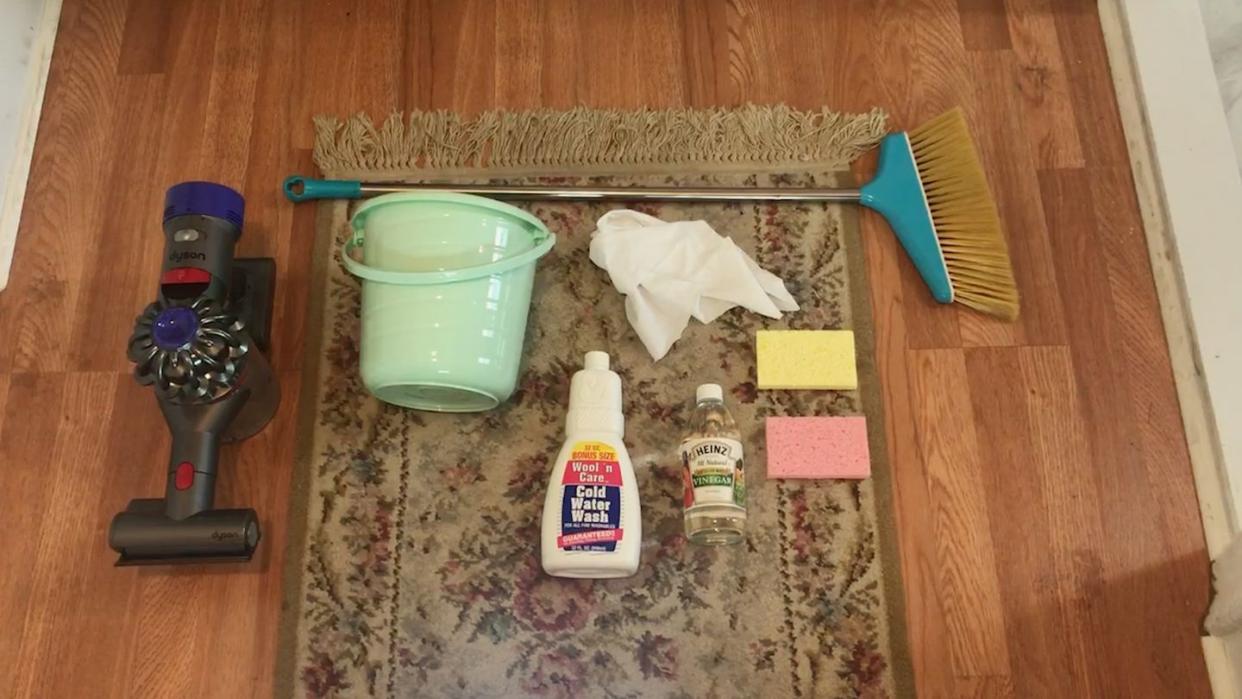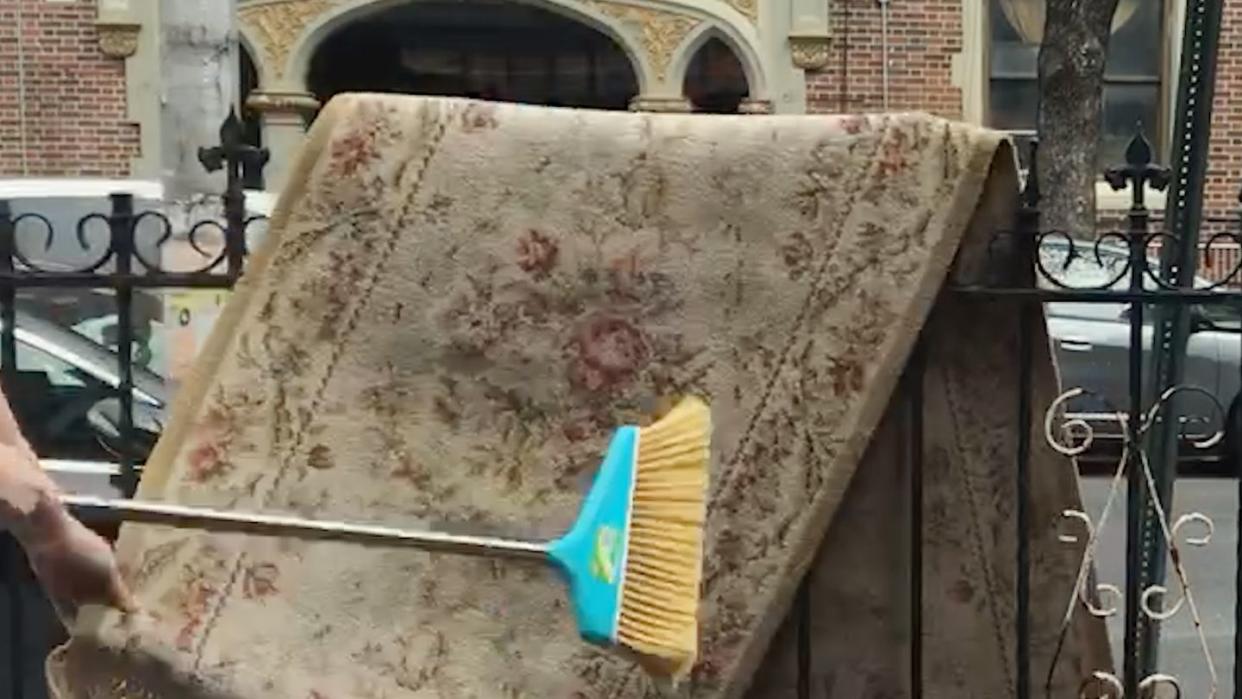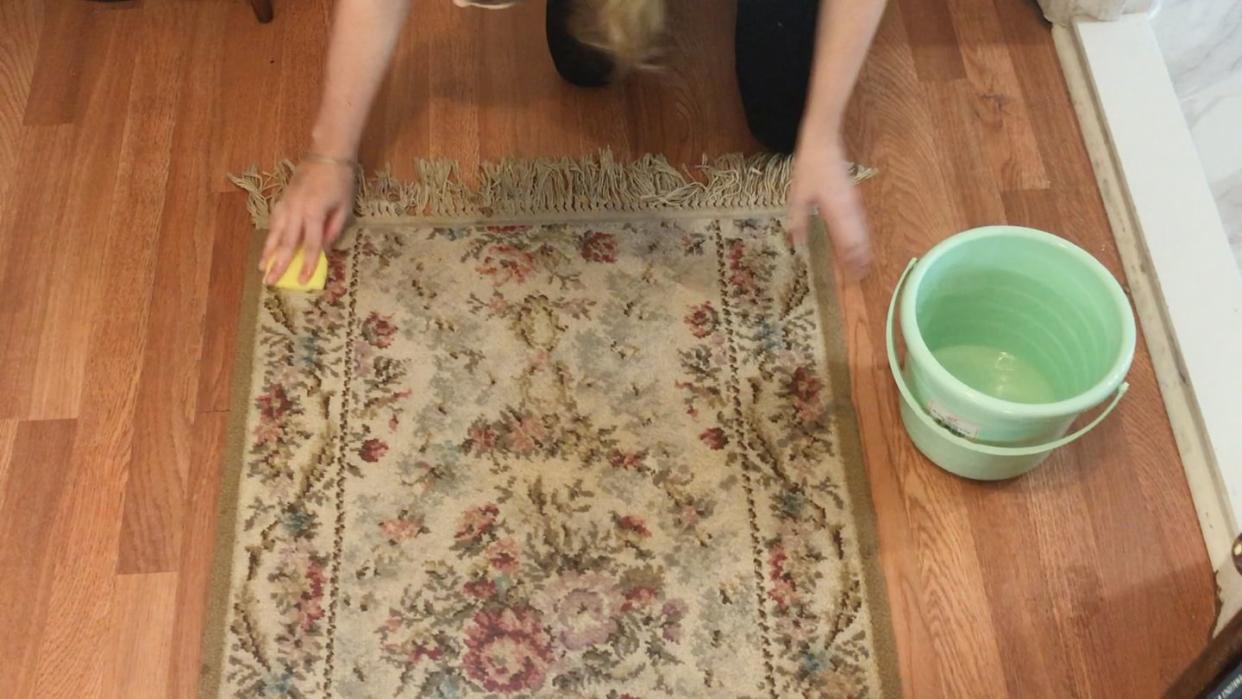How to Clean Every Kind of Rug, Even Your Vintage Shag Carpet
Area rugs are the literal foundation of your home. You walk on them, your children play on them, and they're the unsung heroes of every family game night and dance party. After tracking in dirt and debris from outside, though, you might be wondering how to clean an area rug properly. There's the standard weekly vacuum, sure, but we're talking about how often to deep clean your rugs. If your answer is, "What?" or "Never," don't worry, you'll receive no judgment from us—we're just here to help.
For professional advice on how to deep clean any kind of carpet, we reached out to the rug experts at Loloi Rugs, which is well known for its quality and collaborations with some of the biggest names in the business, from Magnolia Home and Amber Lewis to Justina Blakeney. Our friends at Loloi shared everything you need to know about how to clean an area rug to keep it looking brand new.
How to Deep Clean an Area Rug
Area rugs can be spot cleaned if they get a stain. But every few months to a year, they need to be deep cleaned. The method outlined below is suitable for wool and polyester rugs; you can also clean silk rugs using this method if you use equal parts water and vinegar instead of detergent. As we mention below, natural fiber rugs such as jute and sisal should be deep cleaned by a professional.
Supplies:

Broom
Vacuum
Bucket
Gentle laundry detergent or wool detergent (like Woolite)
Sponges
Rags or dry towels
Process
1. Beat Your Rug
If possible, take your rug outside and hang it over a fence or clothesline. Use the broom or a long rod to beat the rug to free any leftover dirt, dust, or crumbs.

2. Vacuum Your Rug
Take the rug back inside, lie it flat, and vacuum it thoroughly on both sides to remove any remaining loose dirt and dust.
3. Make Your Cleaning Solution
Mix your cleaning solution in the bucket. "Use a common wool cleaning detergent or create one with a teaspoon of natural detergent and a teaspoon of pure white vinegar, combined with a quart of warm water," advises the team at Loloi.

4. Apply Cleaning Solution to Rug
Dip a sponge in the cleaning solution, squeeze out the excess moisture, and blot the cleaner onto the rug, working in sections until you've covered the entire surface.
5. Rinse With Clean Water
Empty the bucket and refill it with clean water. Repeat step 4 with the clean water and a clean sponge.
6. Spot Clean
Blot any stubborn stains with a combination of detergent and vinegar. Afterward, rinse again using a clean sponge and water.
7. Blot Out Excess Moisture
Using a clean, dry rag or towel, blot the entire rug surface to remove excess moisture.
8. Dry Well
Allow the rug to dry completely overnight before walking on it. This is best done while hanging (even draped over a chair) so both sides of the rug have a chance to dry evenly.
How to Clean Your Area Rug Based on Material
Wool
A natural fiber from sheep, wool is durable and thick, making it a natural choice for high-end rugs. Aim to deep clean your wool area rugs every other month using a wool-specific detergent or another gentle laundry detergent.
Silk
A natural fiber that is slightly more delicate than wool, silk is best cleaned with a mixture of equal parts water and white vinegar or baking soda. Because of the delicate material, it's a good idea to spot treat any stains on a silk rug immediately rather than subject the entire rug to repeated cleanings.
Polyester
Polyester is relatively stain resistant, so it's a great option for high-traffic households with pets or children. Some are even machine washable. If your polyester rug is looking a bit dull, you can clean it using a gentle detergent. Make sure to test your cleaning solution on an inconspicuous corner first as polyester rugs may not hold dye as well as other fibers.
Cotton
Often used for flatweave area rugs, cotton has the ideal balance of an approachable low pile height and a bit of softness underfoot. Typically, cotton area rugs can be machine washed on a gentle cycle with warm water, though you should always check the care instructions first. Hang to dry so excess heat from the dryer doesn't shrink the fibers and warp the rug.
Jute and Sisal
While natural fiber rugs like jute and sisal have gained a reputation for being durable and nearly indestructible, they are not water resistant so you should avoid saturating them as much as possible. Spot clean your jute area rug as necessary using mild dish soap or detergent and as little water as possible, making sure to dry both sides of the rug thoroughly afterward. If your jute rug needs a deep cleaning, opt for a professional service.
Vintage
Vintage rugs can be far more delicate than new ones, so check out our specific guide for cleaning these.
How to Vacuum an Area Rug
Your rugs should be vacuumed every few days to every week, depending on use, say the experts at Loloi. Here's their advice:
Regular Pile Area Rugs
Vacuum at least once a week, though you can do it more frequently if you share your home with kids or pets.
Shag Area Rugs
First, shake shag rugs outside to loosen dirt and other particles before vacuuming. It can also help to beat the back of the rug firmly to dislodge any crumbs or dirt stuck in the long fibers.
Looped and Braided Area Rugs
These textured rugs require that you remove your vacuum's beater bar or turn off its beater bar setting. If it cannot be removed, set the vacuum on the tallest roller height possible (as in the distance from the floor) to do your best to ensure the beater bar doesn't snag and damage the looped fibers of the rug.
Follow House Beautiful on Instagram.
You Might Also Like
